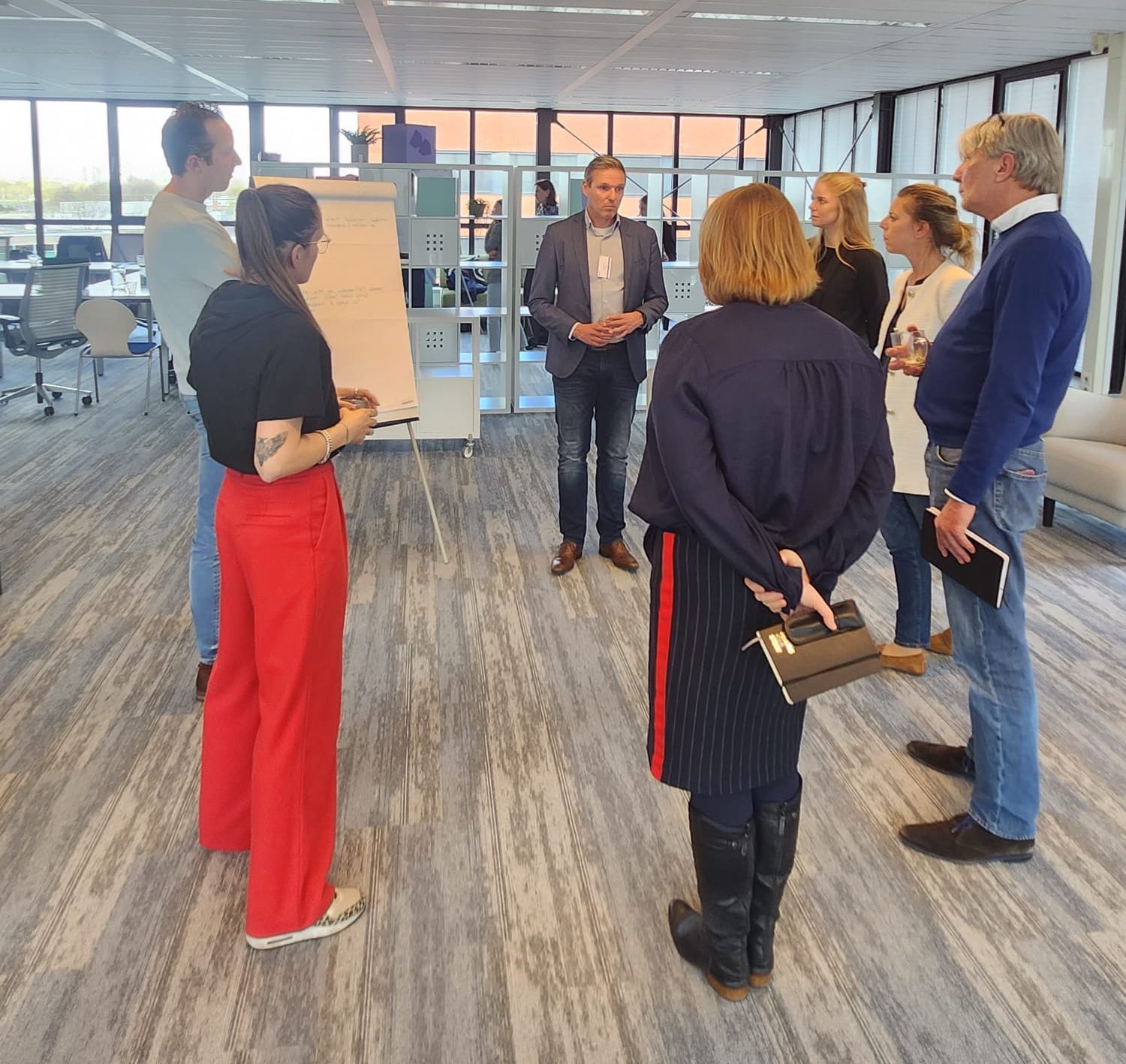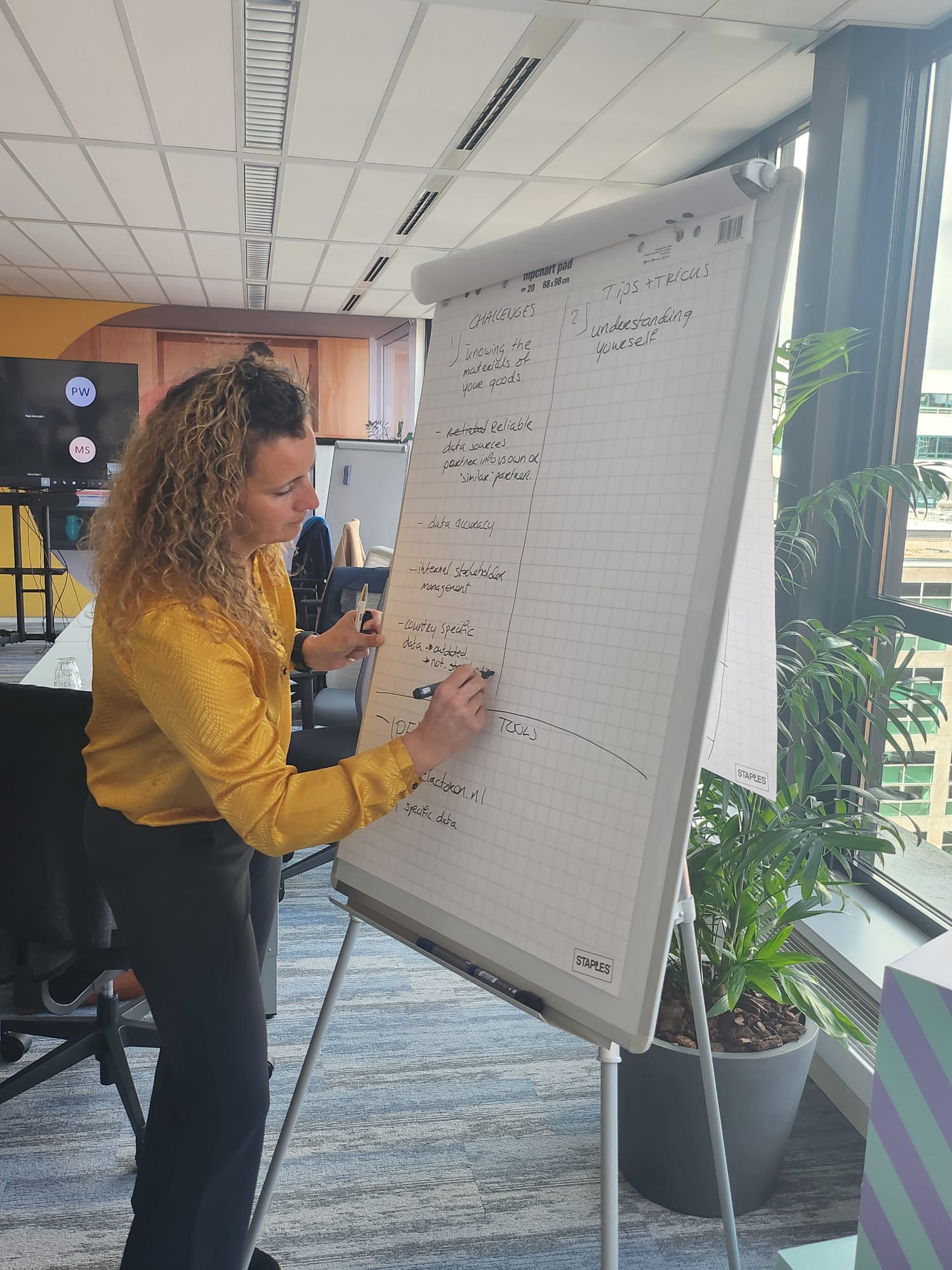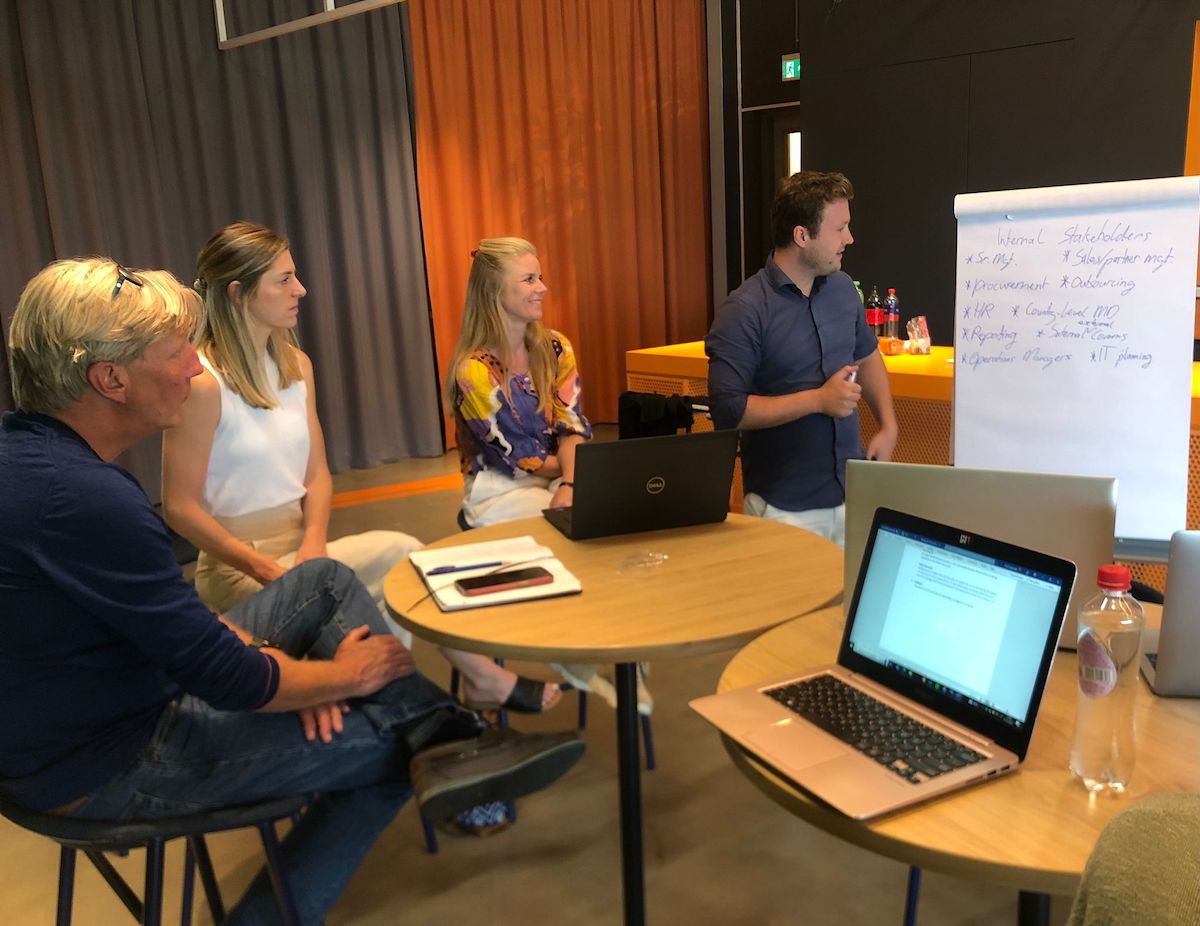Stakeholder Inclusion is Key to Overcome Scope 3 Data Challenges
This year, UN Global Compact Network Netherlands is piloting two peer learning groups, one on Gender Equality and one on Climate Action. The goal is for the participating companies to learn more about these important topics, dig into the challenges that they are facing, and exchange best practices that can help overcome these challenges. This blog captures our companies’ peer learning journey.
Our climate action peer-learning group has reached full speed now. In April the second Climate Action peer-learning session took place at Bugaboo HQ on the topic of Scope 3 Data, and last week we dived into the topic of stakeholder engagement with regard to corporate climate action at the hypermodern automated and robotized small package sorting center (SKP) of PostNL. We highly recommend watching this video to learn more about the SKP.
The preparation assignment for the participants was to clarify what scope 3 categories are significant (material) for their company. Most of them identified the categories: purchased goods and services, distribution and transportation, and commuting/business travel. In smaller break-out groups, there was a chance to reflect on challenges, tools, and tips for managing the data of these different emission categories.

Some companies struggle to determine the emission factors of the goods they purchase from suppliers. That could be partly due to, for example, fluid relationships with lots of different suppliers. Many data sources such as the CDP Suppliers Program, the CEDA database, IDEMAT, co2emmissiefactoren.nl, and the GHG protocol scope 3 (SBTi) were discussed.

Additionally, other shared challenges have to do with reaching out to suppliers to get real data and the course of action to get suppliers on board. This is where stakeholder engagement becomes key. All companies need to work together with different internal and external stakeholders during their sustainability journey. How to measure the quality of the relationship with your stakeholder? The report of the UN Global Compact Network Netherlands on stakeholder inclusion explains a model with four levels of engagement. The levels are determined by 4 elements:
- First element “Motivation”: What is your reason for engaging with stakeholders?
- Second element “Orientation of stakeholders”: What is your relation or ground of working together with the companies?
- Third element “Pursued Outcomes”: Are you, for example, looking for validation or insights?
- Fourth element “Disclosure”: Are you only doing the mandatory, bare minimum?
With this model in mind, the participants got the chance to discuss their challenges and opportunities to evolve their stakeholder engagement activities. When it comes to senior leadership the participants discussed the importance of persuasive pitching, regularly informing and consulting the C-suite, and the effectiveness of using peer pressure by comparing to competitors.
It is important to keep in mind that too much criticising, repetition, negativity, or only presenting problems, will probably cause backlash. To work more effectively with procurement colleagues the importance of educating yourself as a sustainability professional on the basics of procurement is key. Other suggestions that came out of the peer-learning discussion were the introduction of shared targets for the sustainability and procurement departments, and to be culturally sensitive when your stakeholders have a different cultural background. Working together with stakeholders on shared climate goals is essential.
Please reach out if your company is a participant of the United Nations Global Compact, and interested in joining our climate action peer-learning group. Mail to swan@unglobalcompact.nl.

